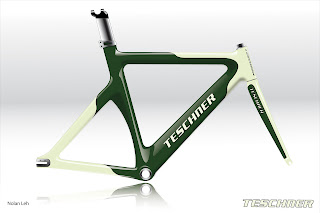Track Bike Frame Rendering: Teaching Adobe Illustrator for ID

I've been teaching Adobe Illustrator to the Western Industrial Design sophomore students for six years now. It's a powerful tool for doing design renderings. Here's a few examples from last fall of some track bicycle frames. The original line art is from the Teschner bicycle company. I challenge the students to design the graphics, add reflections and shading, and play with different materials. That way, they aren't spending time on the frame shape and can concentrate on the color and rendering. The main Illustrator tools being used here are: the pen tool, adjusting the transparency and blending modes, stylize feather, blur, clipping masks, and lots of gradient manipulation. These are all sophomores (2nd year students). by Nolan Leh by Elijah Hooper by Ryan Hume by Anna Perrela by Paul Linden
